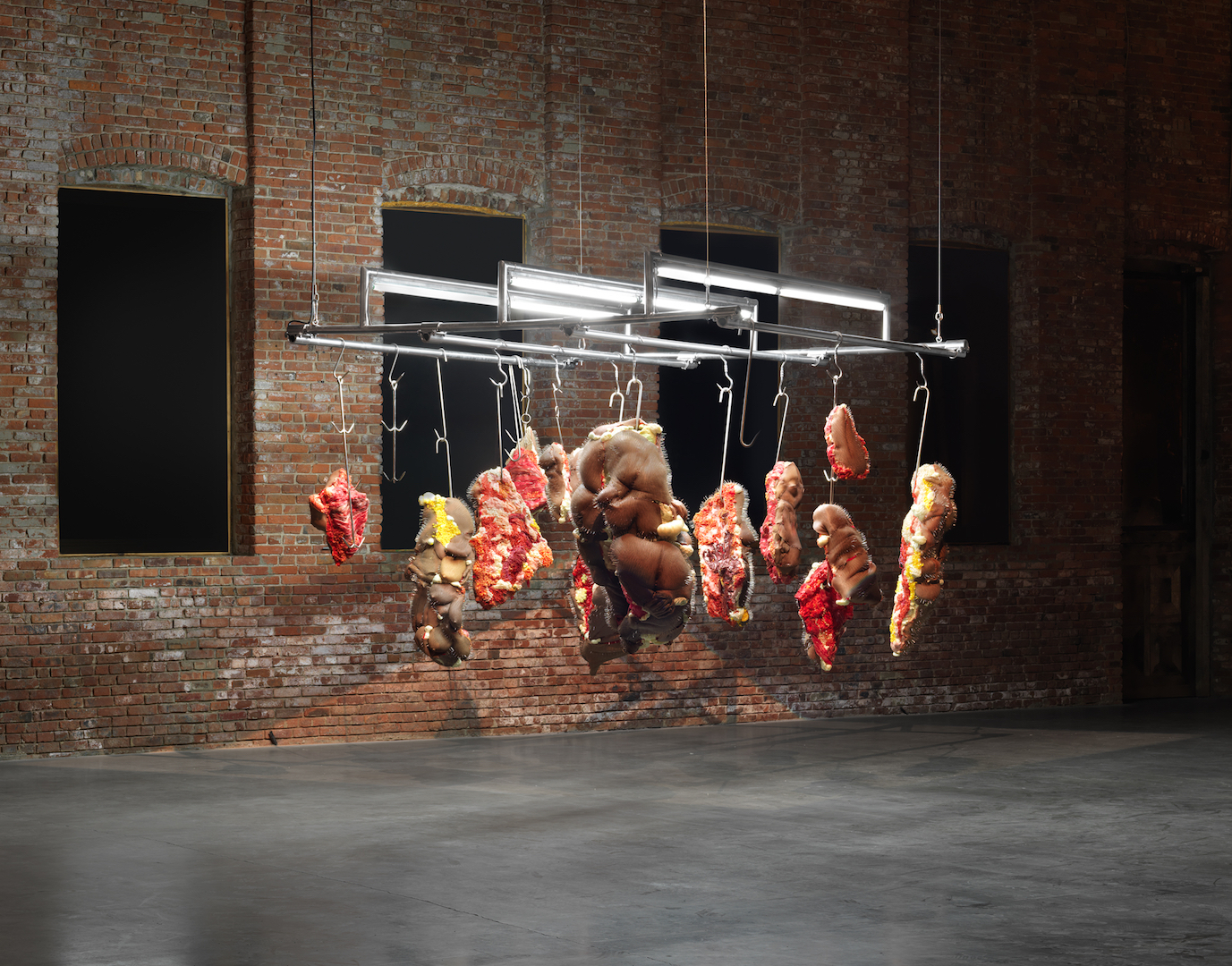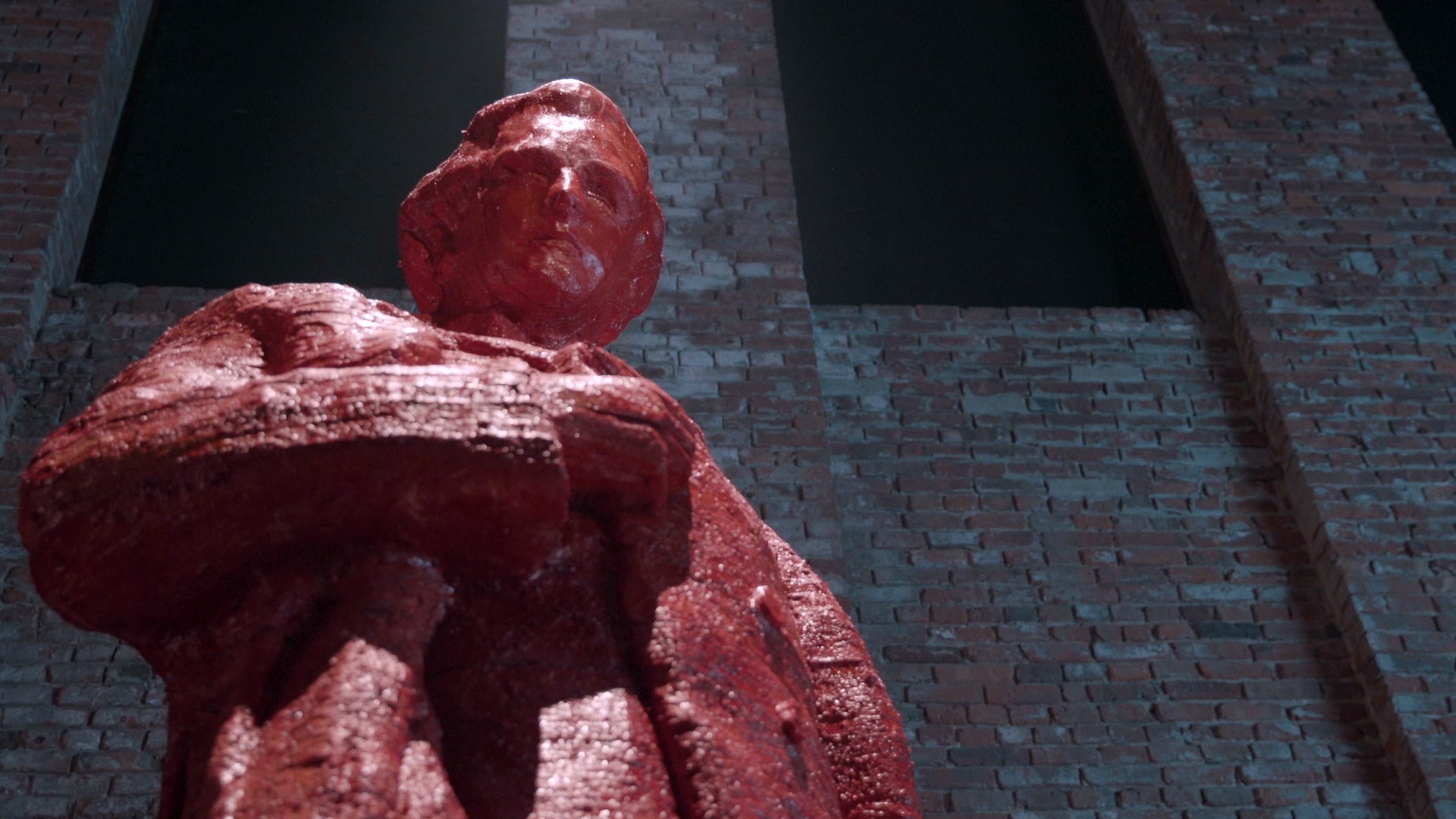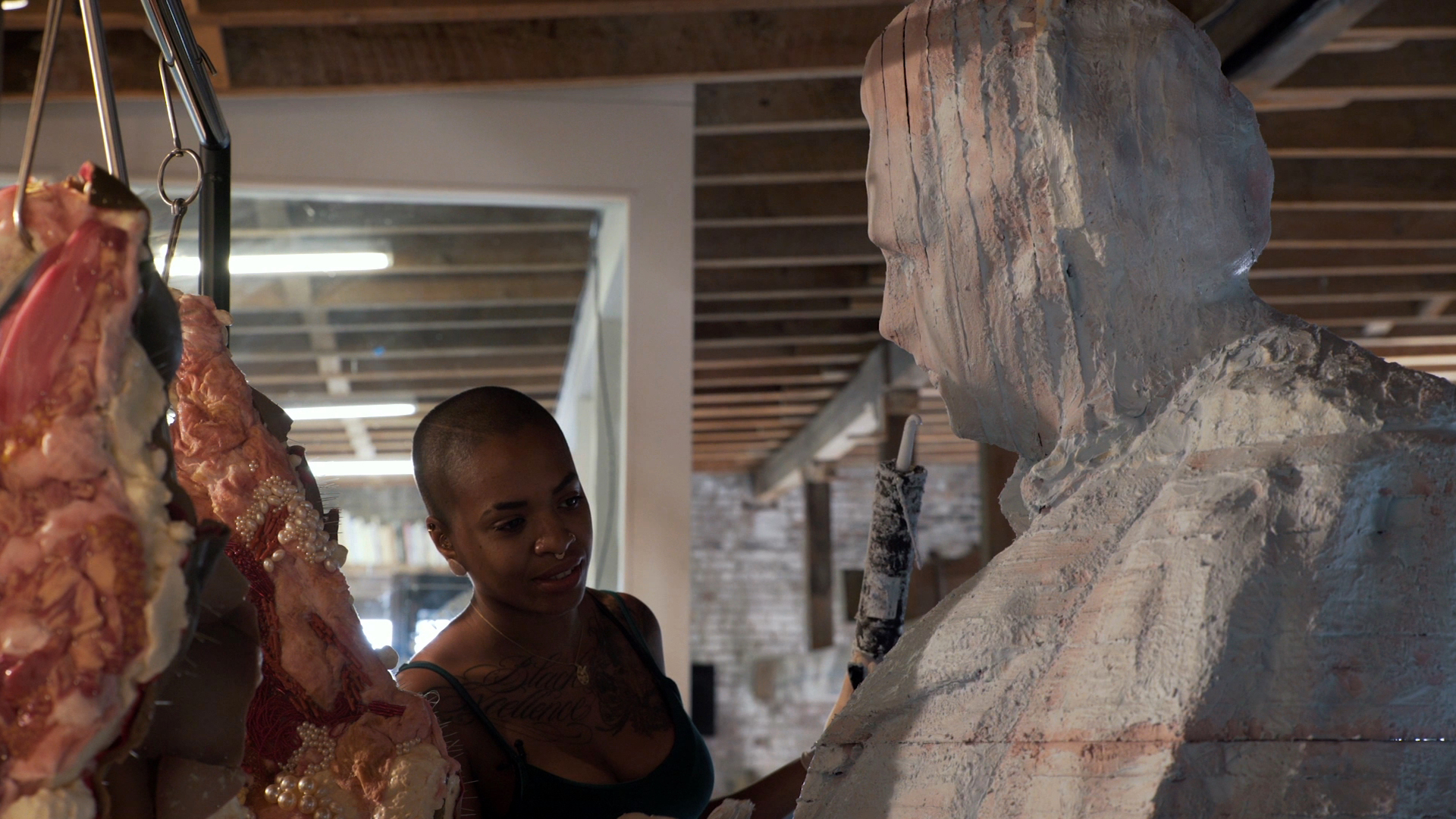
Doreen Garner. Rack of Those Ravaged and Unconsenting, 2017. Installation view: Pioneer Works, Brooklyn. Silicone, insulation foam, glass beads, fiberglass insulation, steel meat hooks, steel pins, pearls; 8 × 8 × 8 feet. Courtesy of the artist and Pioneer Works, Brooklyn.
In a conversation with film director, Brian Redondo, artist Doreen Garner shares the motivation driving her sculptural practice: to educate viewers about suppressed racist histories embedded in the foundations of a nation built on slavery. Her recent project at Pioneer Works, White Man On a Pedestal, forced viewers to confront the horrific practices of J. Marion Sims, one of the most famous doctors of the nineteenth century, long celebrated as the “father of modern gynecology,” despite the fact that he regularly operated on enslaved Black women without anesthesia or their consent. A statue of Sims in Central Park in New York City was recently the topic of heated debate concerning its removal or preservation. In January 2018 the City of New York decided to relocate Sims’s monument to Green-Wood Cemetery in Brooklyn, where Sims is buried. The statue will be installed without its pedestal and accompanied by informational plaques that contextualize his legacy of medical experimentation on Black women.
BRIAN REDONDO: Who is J. Marion Sims? What are some examples of the things that he did that are particularly atrocious?
DOREEN GARNER: Dr. J. Marion Sims tortured, sliced up, and discarded Black bodies to advance his career. He performed experimental surgeries on enslaved Black women without anesthesia. He would crack open babies’ skulls because he thought it would allow their brains to expand and grow. His work was built on the false, racist idea that Black people were physically different from and inferior to White people; Sims claimed Black people experience pain less than Whites, so he didn’t need to use anesthesia on them.

Doreen Garner at work on White Man On A Pedestal, a two-person exhibition at Pioneer Works, Brooklyn, 2017. Production still from the New York Close Up film Doreen Garner Sculpts Our Trauma. © Art21, Inc. 2018. Cinematography: Brian Redondo.
BR: How did this history motivate your work on view at Pioneer Works?
DG: My work is concentrated on stories in which Black bodies are exploited by the medical industry. In addition to Sims, the show also makes reference to W.H. Robert, a physician from Georgia who cut off the leg of a fifteen-year-old girl despite the fact that she only had a minor leg injury. At the time, doctors would recklessly amputate Black people’s limbs, hoping that any discoveries they might encounter in the process would promote their careers. My sculpture about this amputation is displayed on an operating table on a rotating platform. It slowly spins around, like in a car show or on the QVC channel. On the bottom of the platform, there’s a mirror that reflects a weird ghosted image of the sculpture onto the wall behind it.

Doreen Garner. Poneros, 2017. Installation view: Pioneer Works, Brooklyn. Foam, blood-tinted polyurethane; 48 × 48 × 216.5 inches. Courtesy of the artist and Pioneer Works, Brooklyn.
BR: What specifically are you bringing to audiences, with this show?
DG: My work helps me to question why White men are on pedestals. Sims’s monument stands as a symbol of acceptance of hate and of racism. It’s as if his horrific acts don’t matter because we have benefited from his medical advances. But it’s not healthy to ignore the horror. I like the idea that we can deconstruct his statue. If Sims could see me, a young Black woman, cutting up [a silicone cast of his statue] as a means of entertainment for not only Black people but also White people, I think he would be horrified.
Black people have always been dehumanized by White people. In the media, Black murder is treated like snuff porn: you can watch a video of someone getting shot and killed, and nothing’s being done about it. From 1700 to 2017, racism has transformed into a different type of beast. I try to analyze what it means to dehumanize someone.

Doreen Garner at work on White Man On A Pedestal, a two-person exhibition at Pioneer Works, Brooklyn, 2017. Production still from the Art21 New York Close Up film Doreen Garner Sculpts Our Trauma. © Art21, Inc. 2018. Cinematography: Brian Redondo.
There is a history that needs to be taught and known. I try to illustrate some of the things that I’ve read, like Harriet Washington’s The Medical Apartheid, to contribute in some way to making this information unavoidable. I’m also trying to find a sparkle of hope, that people have hearts, that people are horrified and disgusted [by Sims] even if they aren’t people of color.
As an artist, I can inspire a feeling in someone who might have the power to make decisions [about monuments]. Therefore, I do have the power to change things. These conversations we’re having about monuments and statues are a wake-up call for everybody to get to the issue that’s most important: equality.
Editor’s Note: This interview was conducted in December 2017 and has been edited for length and clarity.
Read the full interview on Art21.org.



